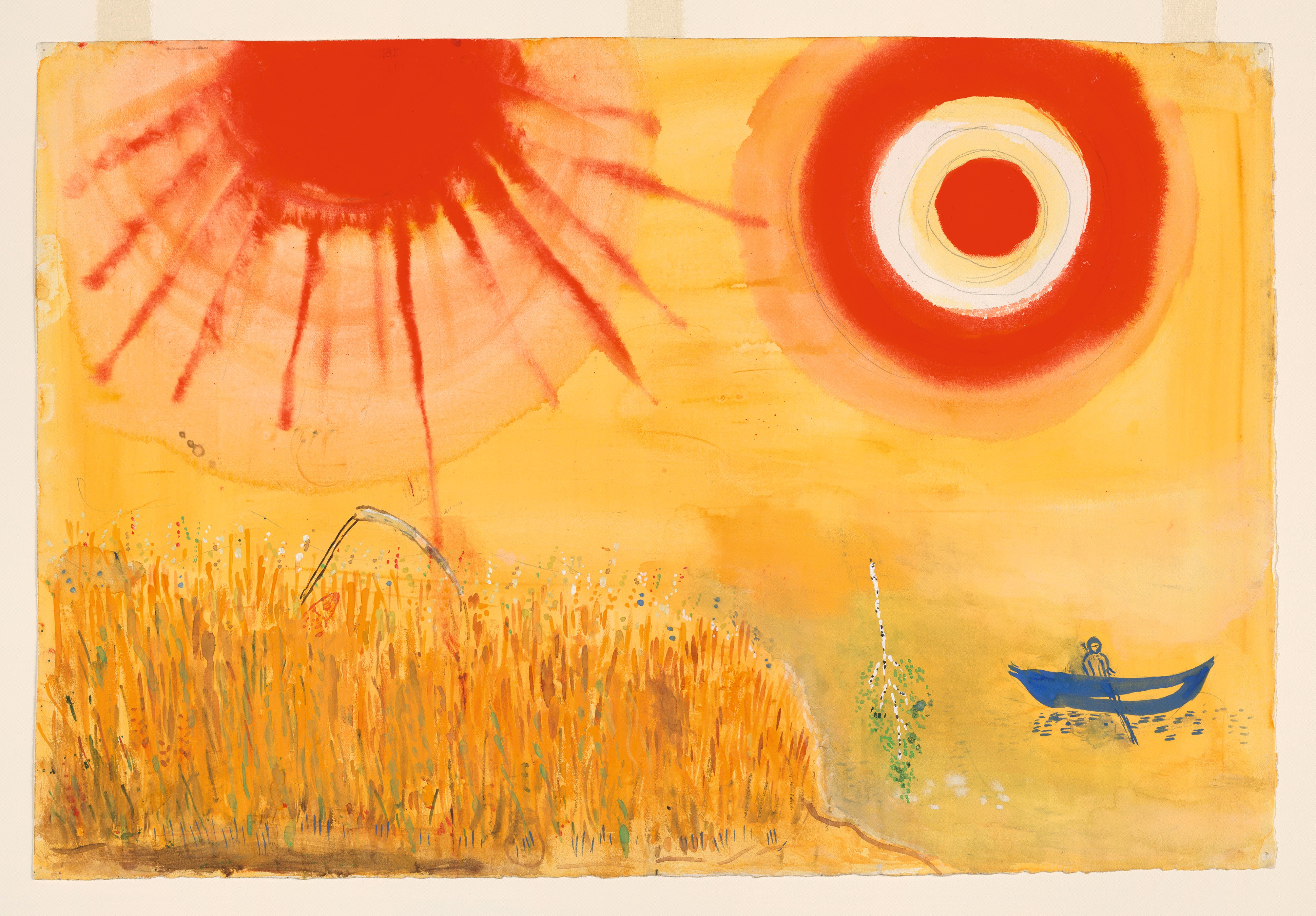I walked into the Resnick Pavilion and into the swirling world of color and fantasy that Marc Chagall created for the theatre and remembered again what made me want to live. Much of the work exhibited in this show was actually made in New York. But it’s quintessentially School of Paris, born of that time between the world wars when artists, both French natives and newly arrived émigrés, wandered freely among styles, schools and movements – the émigrés perhaps most freely of all, with freedom itself something of a novelty. Chagall experienced a kind of rebirth in Paris; and his work comes into its purest synthesis during this period: a fantasist surrealism, informed by Cubism, but shot through with the kind of Orphic chromaticism so influenced by the Delaunays and the Fauves before them. Chagall was forever looking backward and forward, searching for an alternate universe somewhere between the shtetl and the City of Light. He brought that wandering eye and imagination to the stage under the auspices of Léonide Massine and the American Ballet Theatre with his stage and costume design for the ballet Aleko, inspired by a poem by Pushkin. In Aleko, we already see Chagall making a kind of moving tableau out of costumed characters and performers and staging, with emphatically symbolist and expressionist backdrops and costuming designed to both wryly silhouette character and kaleidoscopically sweep up the surrounding atmosphere. Aleko is one of the strongest, well balanced between sharply etched character and brilliant movement; though he also had great success with a New York City Ballet production of the Stravinsky/Balanchine Firebird and the Ravel/Fokine/Lifar Daphnis et Chloé in Paris. Chagall’s staging for the 1967 Met production of Die Zauberflöte rounds out the exhibition and I must disclaim objectivity, as this signature (both for Chagall and the Met) production made for an introduction to Mozart opera, Chagall, and high art collaborations generally. I have not recovered to date from that enchantment and hope never to until the last note is sounded (or called).
Los Angeles County Museum of Art (LACMA)
5905 Wilshire Blvd.
Los Angeles, CA 90036
Show runs thru January 7, 2018


